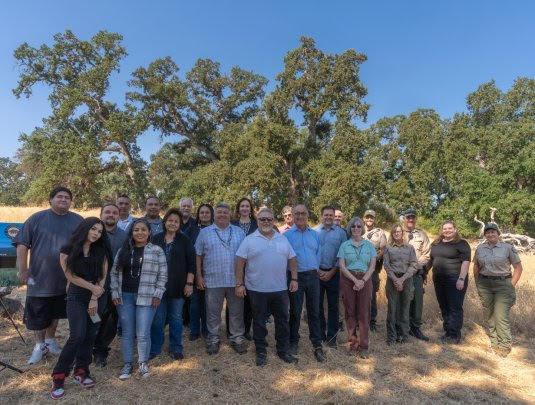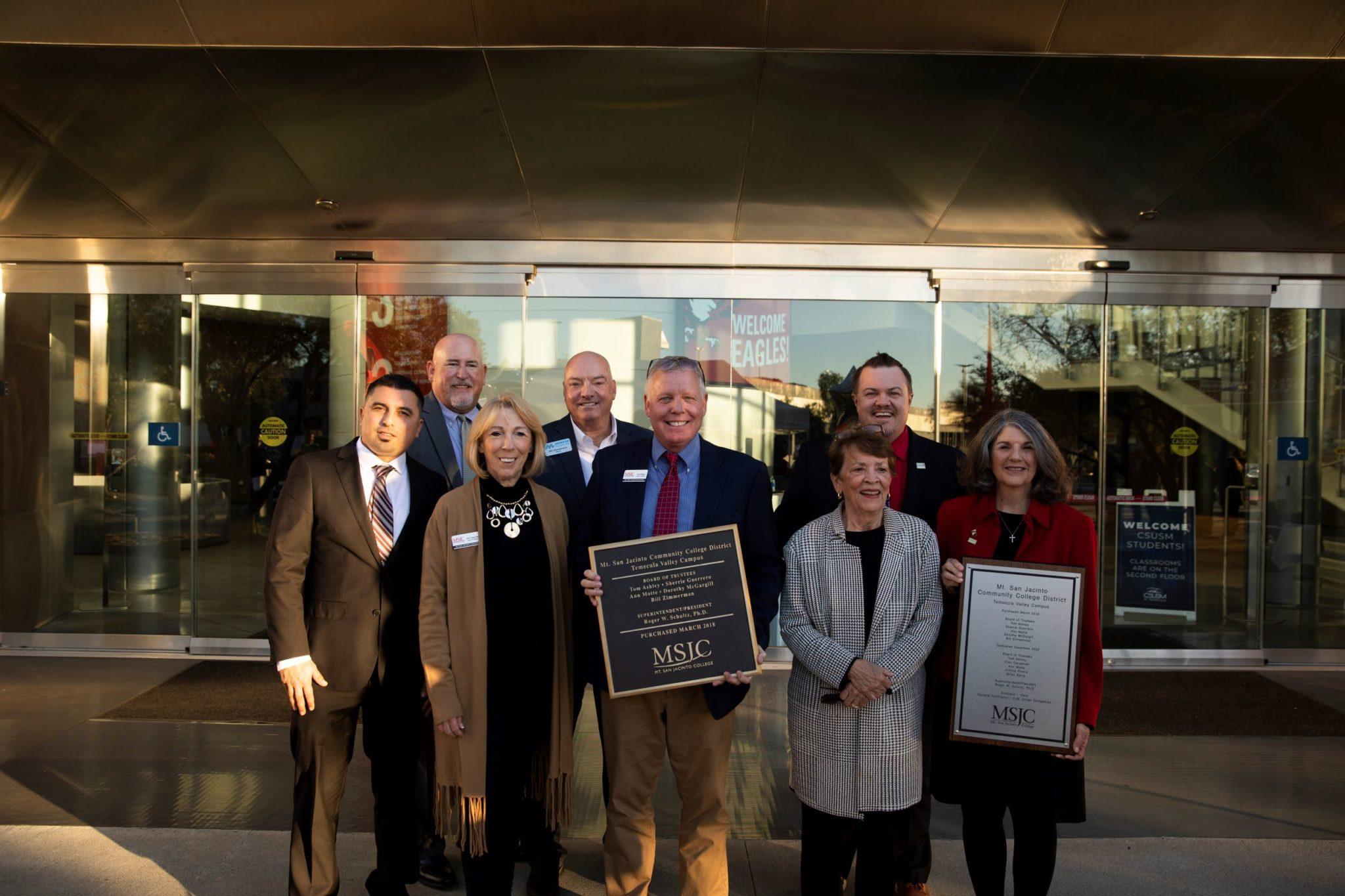The Valley Chronicle - CalPERS is shocked–just shocked–to find cities
CalPERS is shocked–just shocked–to find cities reeling under the burden of growing pension debt
Soboba Band of Luiseño Indians
staffLeprechauns bring lots of green to Soboba Tribal Preschool
 English, Valley Chronicle: Thu, Feb 25, 2021
English, Valley Chronicle: Thu, Feb 25, 2021
Koi Nation of Northern California and California State Parks
staffKoi Nation of Northern California, USA
English, Valley Chronicle: Thu, Dec 8, 2022
24 Kids Shop with a Cop in Hemet
staff24 Kids Shop with a Cop in Hemet
 English, Valley Chronicle: Thu, Dec 8, 2022
English, Valley Chronicle: Thu, Dec 8, 2022
MSJC Hosts Temecula Valley Campus Dedication Ceremony
staffMSJC Hosts Temecula Valley Campus Dedication Ceremony
English, Valley Chronicle: Thu, Dec 8, 2022
NFPA urges added caution this holiday season, as Christ
staffNFPA urges added caution this holiday season, as Christmas Day and Christmas Eve are among the leading days of the year for U.S. home fires
English, Valley Chronicle: Thu, Dec 8, 2022
Stick to a “Go Safely” Game Plan: Celebrate the Holiday
staffStick to a “Go Safely” Game Plan: Celebrate the Holiday Season Responsibly National “Drive Sober or Get Pulled Over” Enforcement Campaign Begins Dec. 14
English, Valley Chronicle: Thu, Oct 27, 2022
Padilla Hosts Virtual Federal Student Debt Relief Brief
staffPadilla Hosts Virtual Federal Student Debt Relief Briefing to Encourage Californians to Apply
 English, Valley Chronicle: Thu, Jun 9, 2022
English, Valley Chronicle: Thu, Jun 9, 2022
Police Seek Help Locating Hit-and-Run Vehicle
staffPolice Seek Help Locating Hit-and-Run Vehicle
 English, Valley Chronicle: Thu, Jun 9, 2022
English, Valley Chronicle: Thu, Jun 9, 2022
Four CSUSB alumni win top award for radio show
staffFour CSUSB alumni win top award for radio show
English, Valley Chronicle: Thu, Jun 9, 2022
Follow-up: Plane Crashes Near Residential Homes in Heme
staffFollow-up: Plane Crashes Near Residential Homes in Hemet
English, Valley Chronicle: Thu, Jun 9, 2022
CSUSB Nursing Street Medicine Program partners with new
staffCSUSB Nursing Street Medicine Program partners with new mobile medical clinic
English, Valley Chronicle: Thu, Jun 9, 2022
Padilla Joins Farm Workers for a Workday as Part of the
staffPadilla Joins Farm Workers for a Workday as Part of the ‘Take Our Jobs’ Campaign
English, Valley Chronicle: Thu, Mar 24, 2022
CHP plans DUI checkpoint in Hemet Valley
staffCHP plans DUI checkpoint in Hemet Valley
English, Valley Chronicle: Thu, Mar 24, 2022
Don't undermine scientific discovery -- ever, but espec
staffDon't undermine scientific discovery -- ever, but especially now
English, Valley Chronicle: Thu, Mar 24, 2022
C.W. Driver companies breaks ground on new three-story
staffC.W. Driver companies breaks ground on new three-story stem education building
 English, Valley Chronicle: Thu, Mar 24, 2022
English, Valley Chronicle: Thu, Mar 24, 2022
35.3% Of Unvaccinated California Residents Cite Governm
staff35.3% Of Unvaccinated California Residents Cite Government Distrust
English, Valley Chronicle: Thu, Mar 24, 2022
ICYMI: Padilla Highlights From Judge Jackson’s Supreme
staffICYMI: Padilla Highlights From Judge Jackson’s Supreme Court Confirmation Hearing
English, Valley Chronicle: Thu, Mar 24, 2022
MSJC Celebrates Groundbreaking of New STEM Building and
staffMSJC Celebrates Groundbreaking of New STEM Building and Opening of New Animatronic Makerspace
English, Valley Chronicle: Thu, Mar 3, 2022
MSJC Receives $500,000 Apprenticeship Grant
staffMSJC Receives $500,000 Apprenticeship Grant
CalPERS is shocked–just shocked–to find cities reeling under the burden of growing pension debt
The Valley Chronicle - CalPERS is shocked–just shocked–to find cities
CalPERS is shocked–just shocked–to find cities reeling under the burden of growing pension debt

Koi Nation of Northern California and California State Parks Renew Memorandum of Understanding and Celebrate Renaming of Ridge and Trail
Koi Nation of Northern California, USA

MSJC Hosts Temecula Valley Campus Dedication Ceremony
MSJC Hosts Temecula Valley Campus Dedication Ceremony
Stick to a “Go Safely” Game Plan: Celebrate the Holiday
Stick to a “Go Safely” Game Plan: Celebrate the Holiday Season Responsibly National “Drive Sober or Get Pulled Over” Enforcement Campaign Begins Dec. 14

Police Seek Help Locating Hit-and-Run Vehicle
Police Seek Help Locating Hit-and-Run Vehicle
Follow-up: Plane Crashes Near Residential Homes in Hemet
Follow-up: Plane Crashes Near Residential Homes in Hemet
Padilla Joins Farm Workers for a Workday as Part of the
Padilla Joins Farm Workers for a Workday as Part of the ‘Take Our Jobs’ Campaign
Don't undermine scientific discovery -- ever, but espec
Don't undermine scientific discovery -- ever, but especially now

35.3% Of Unvaccinated California Residents Cite Governm
35.3% Of Unvaccinated California Residents Cite Government Distrust
MSJC Celebrates Groundbreaking of New STEM Building and
MSJC Celebrates Groundbreaking of New STEM Building and Opening of New Animatronic Makerspace
MSJC Receives $500,000 Apprenticeship Grant
MSJC Receives $500,000 Apprenticeship Grant
24 Kids Shop with a Cop in Hemet
24 Kids Shop with a Cop in Hemet
Stick to a “Go Safely” Game Plan: Celebrate the Holiday
Stick to a “Go Safely” Game Plan: Celebrate the Holiday Season Responsibly National “Drive Sober or Get Pulled Over” Enforcement Campaign Begins Dec. 14

Four CSUSB alumni win top award for radio show
Four CSUSB alumni win top award for radio show
Padilla Joins Farm Workers for a Workday as Part of the
Padilla Joins Farm Workers for a Workday as Part of the ‘Take Our Jobs’ Campaign
C.W. Driver companies breaks ground on new three-story
C.W. Driver companies breaks ground on new three-story stem education building
MSJC Celebrates Groundbreaking of New STEM Building and
MSJC Celebrates Groundbreaking of New STEM Building and Opening of New Animatronic Makerspace










